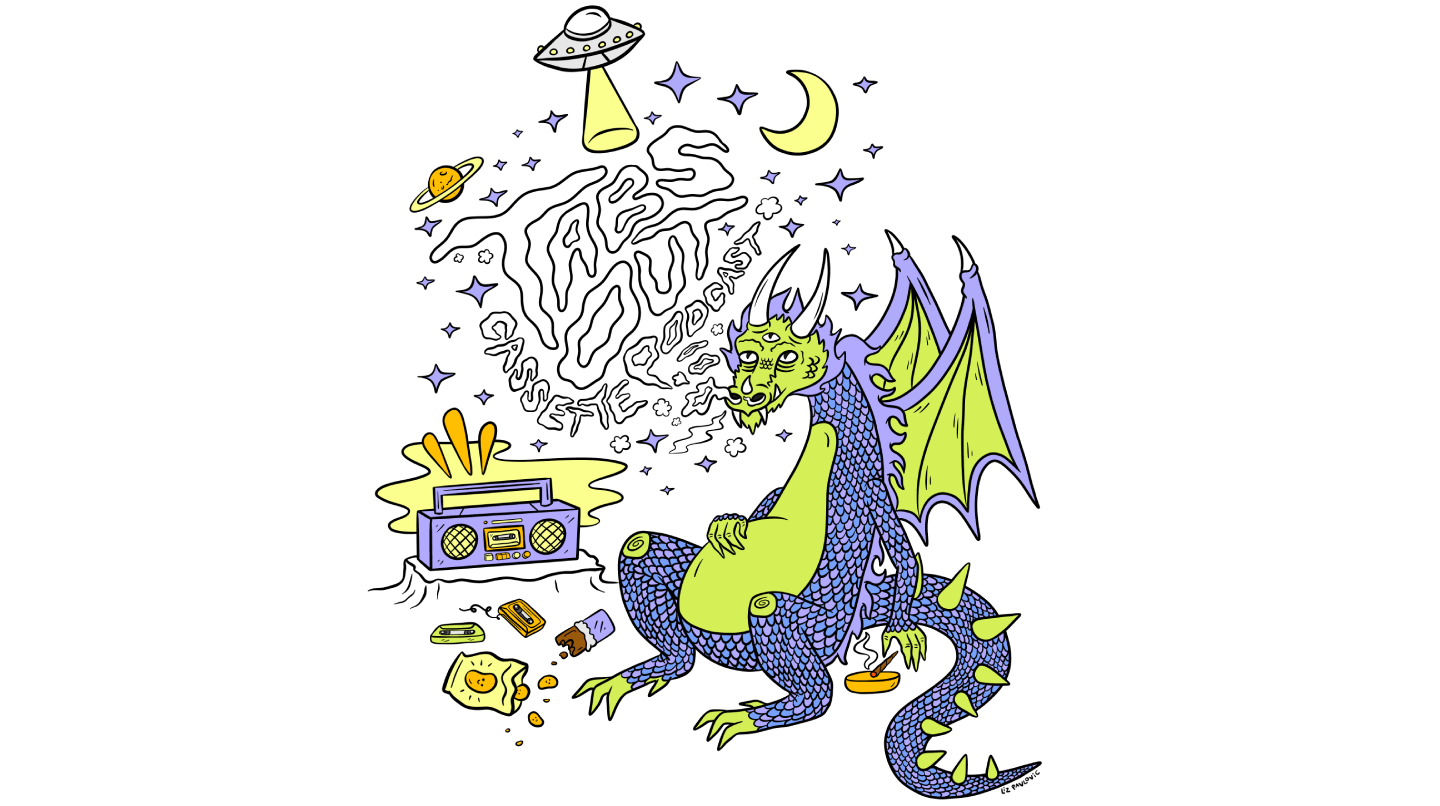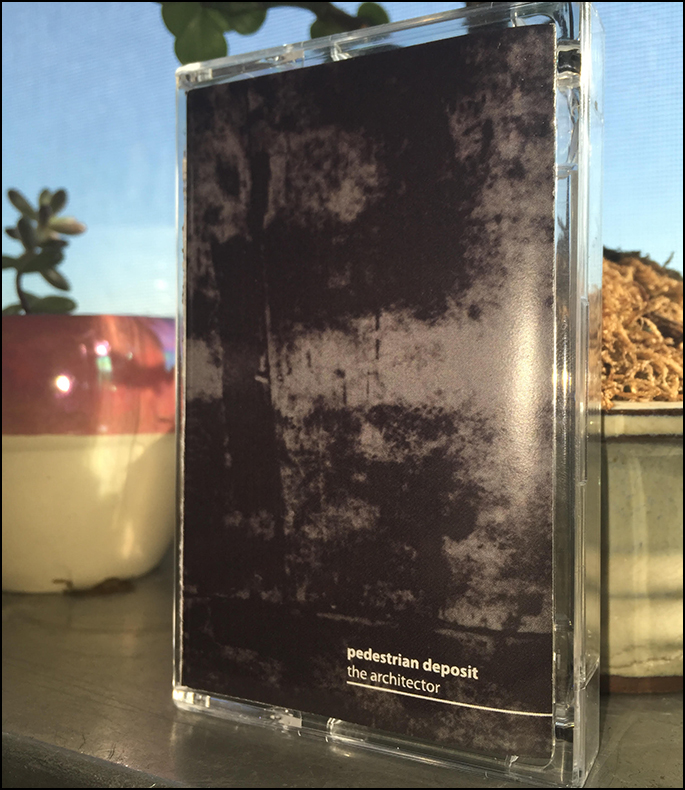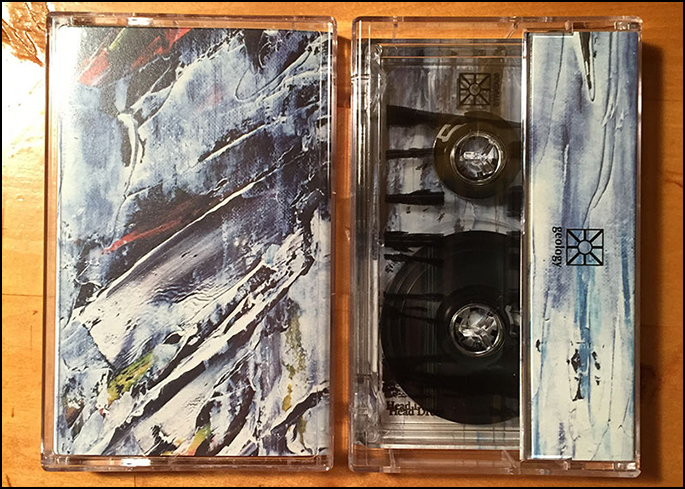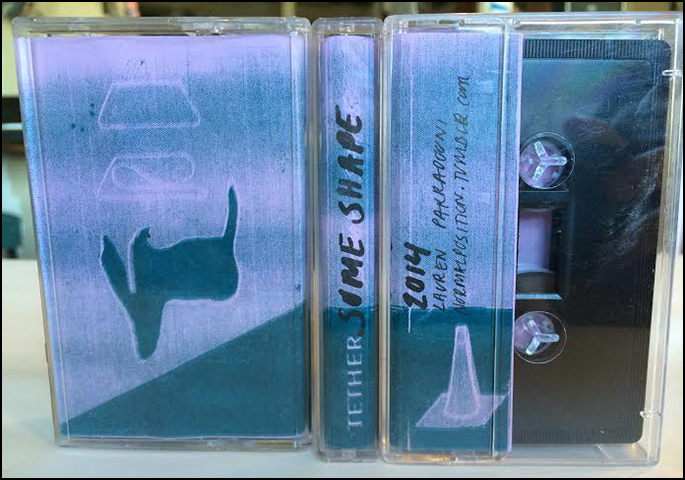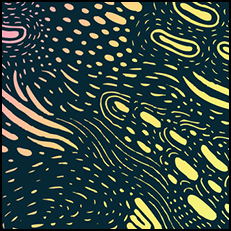Interview – Black Thread
1.22.15 by Ian Franklin
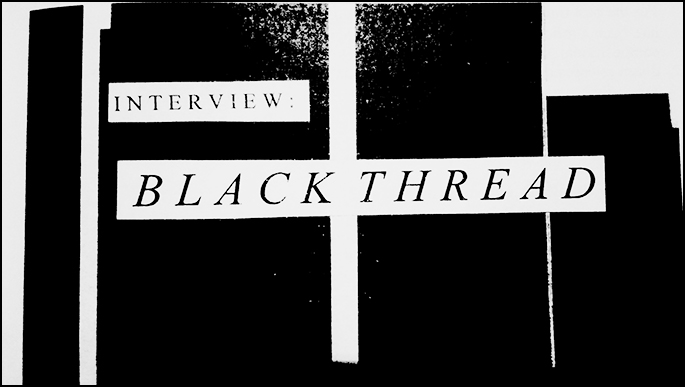
The following interview was conducted over email in October 2014 by Ian Franklin. It’s in the first issue of his zine, Undefined. You can purchase a copy here.
For the past three years, San Francisco based tape loop master Greg Gorlen has been producing some of the most compelling melodic and ambient compositional work under the name Black Thread. With more than a dozen releases on his own Turmeric Magnitudes as well as releases for Tusco Embassy, Chaos of the Stars, and La Cohu; Black Thread has established himself as one of the premier players of tape manipulation in the ever growing field of experimental music.
How did the Black Thread project start?
It started out in December 2011 like most of my projects; band name first. It began rhythmically oriented. I did demos with turntables, drum machines, and trackers and played a show under the name based on a harsh noise pure data patch that completely failed before the performance. A few months later when I stumbled on the idea of adapting Frippertronics-style two-head tape loops to cassettes, the name found its sound, so to speak.
It’s obviously the most melodic of all your projects, but in your own words how would you say Black Thread differs from your other projects under the Turmeric Magnitudes / Cascading Fragments umbrella?
Over the years I’ve done a few works under various names which are fairly melodic, but those releases were mostly one-time studies in a specific style rather than an ongoing, concerted effort to make melodic music. But yeah, I think Black Thread as melodic tape loop music somewhere between drone/ambient and noise, or whatever those terms stand for. Also, there’s a certain feel to the project which is harder to describe in words… Maybe “existential”.
Many Black Thread releases feel like they are cut from one long narrative, or they’re each representative of a certain mood or feeling that is present from release to release. When I see there’s a new BT tape up, I feel like I have a general idea of what the mood is going to feel like. Would you say that’s an accurate assessment? If so, is this a conscious decision or one that occurs naturally?
When I played a radio show a few years ago, one of the hosts pointed out that there was only one Black Thread song. That’s probably true, more or less. Although within that song, I think I’ve found a decent spectrum of variants. I like defining or refining an aesthetic (or attempting to), but I try to be open to development at the same time. Which can be a fun challenge. I thought I’d get bored of playing the same 7 notes and trying different filtering/speed/noise variations, but I guess it’s a bit more bottomless than I thought. It turns out many artists just have a few tricks, only sometimes the formula isn’t as stripped down and obvious. I heard on a radio program of a computer program written by David Cope that analyzes scores of, say, Bach or Mahler, and can generate a convincing and moving piece in the style over and over. Many classical composers or painters do series of pieces or exercises that are all variations on a form. You know exactly what’s coming but it’s interesting in the execution. All this information seems to suggest that art works a lot differently than it’s popularly understood to be. That it’s more about finding a way of working within inherent limitations in the options. Which is ironic given that limitlessness and an abundance of options is largely the promise (or result) of technology and culture.
Black Thread recordings always have a raw, or unaffected sound to them. Tape loops seem to be utilized on every BT recordings, but what types of instrumentation do you use beyond that (without giving to much away)? Is there certain instruments or techniques you use on BT recordings that are not present on others?
There’s not much to give away, and I use the same gear on almost all my music. Hardware setup, with a few variations: Tascam 4-track portapotty, Sony TCM-series handheld tape recorders, various DIY cassette loops, Roland MC202 monosynth, delay/distortion/EQ pedals, contact mic. I have a couple other pieces like some modular gear I have thrown in from time to time, particularly on the noisier releases such as “Descending Helioptrope Shards”. Software setup: Cubase for editing/mixing/processing, a couple of Reaktor VST fx, and pure data. There’s a YouTube video of Black Thread performing at Bleakhaus (RIP?) that shows the tape loop system working close up, for the curious. The Tascam 4-track is my only essential piece of hardware, followed by the Tascam power adapter that comes with it.
What do you see when you listen to a particularly good piece of music?
Fun question. I guess I see what’s normally in front of me, but it seems a lot more meaningful than without music. It seems to follow that music could be dangerous depending on what I’m looking at…
How do you see your music in the greater framework of experimental music being made? Or do you not concern yourself with that type of thinking?
I don’t think about it too much when I’m working, but I’m sure my music is insignificant in the greater framework of experimental music, which is for the best. I really like the particular parts of experimental music that I happen to gravitate toward, but on the whole it has about as much to offer as anything else in life (which is to say, very little, or everything), so it’s just one path among many. I’m certain I got here almost entirely by chance, along with just about everyone doing everything in life. Of course, beliefs and day-to-day thoughts and actions often can’t coincide, so I need to think what I’m doing is important on some level in order to keep doing it. The species seems to function on pleasant (or unpleasant) lies, and that’s not necessarily a bad thing if it’s the only way forward.
What is your general approach to making or recording music? Do you have a certain routine you follow? How is a Black Thread recording process different from say, a Barrier Of Dark Leaves recording process?
They’re pretty much the same. I sit down in front of my tape things and mess around until I have some sounds I like, then rip the tapes to Cubase and edit until I’m happy with the results. I probably spend most of my musical work time on the computer, like 70%. The hardware stuff is one-shot and I can generate a lot of sound quickly. When I work all-digital, like on my pure data pieces, I try to replicate the fast one-shot sound generation stage, otherwise I can’t get anything finished. The outboard gear difference between Black Thread and Barrier Of Dark Leaves is that Black Thread involves getting my 202 out and making new tape loops and Barrier Of Dark Leaves involves getting my static generator out. The other difference is what I feel like making, or, more often, whatever needs to be made for another label or for a particular split or upcoming performance, etc. Needless to say, not much about this process requires being in a professional studio, although I’ve had fun doing that with various bands I’ve played with over the years. It’s important that I can do everything from recording to final release within a 5-foot radius of where I sleep every night, otherwise I get pretty crabby. Beyond that, I prefer the simplest setup possible. I also tend to enjoy music made by people in similar circumstances. But not always! I don’t have access to many other options. So if I didn’t like doing things this way, I’d probably have to get used to it anyway, which is pretty much what I spent the last decade gradually coming to terms with.
The recent collaboration with Anatol Locker to remix your C20 “Stay/Vale” is fantastic. How did that come about? What was the recording process like? Any other plans for similar remix projects in the works?
It was extremely easy. Anatol messaged me out of the blue on Soundcloud with the remixes already finished and I did very minor editing and processing. He basically ran the tape through some (probably customized) time stretching patch in Max similar to the kind that turns Justin Bieber songs into Brian Eno songs, but it sounded great and made me reassess my views of that sort of process. I had an offer from Charles Barabé from the La Cohu label waiting to fill (I did a tape of his duo La Cochonnerie Humaine for my last label) and I asked my friend Eric Sanchez to do the artwork. Whole story. Currently, I’m working on a piano and tape loop album with my neighbor Danny Clay. We mostly sit around complaining about experimental music, so you know it’s a great band. Black thread is a pretty introspective project, not really the kind of stuff you’d play at a party, so it’s taken a few years to feel comfortable with bringing other people into the process.
If you could pick someone for your dream collaboration, who would it be?
Nobody specific comes to mind other than reactivating a few collaborations currently separated by space and different lives. But to indulge a fantasy, my friend (and collaborator) Brendan Landis suggested a while back that I send some Black Thread material to Lil B to use as “beats”. But I doubt it’ll happen, even after “Rain In England”. The guy is too busy — I imagine his phone calender has hourly reminders to stay positive. Since I have plenty to keep me busy on my own, I don’t really pursue collaborations, but I like them when they come along. Especially the kind where I just do my thing and they do their thing over it, or vice versa, and an amazing result happens. The frustration is when collaborations wind up being a watered down version of what each person does well on their own, which seems to happen more often than not. In any case, I’m pretty certain a collaboration with Lil B would be in the former category rather than the latter. He doesn’t seem like the type to have any compunctions about being anything other than himself in a collaborative setting, or in any other setting for that matter. Another fantasy would be playing in a Jandek live band someday, for similar reasons. It’d also be great to collaborate with my current noise wall teen obsession (I have posters on my wall with hearts drawn on them), Julien Skrobek, who I’ve done a few tape releases for. But that’s not much of a fantasy because we’d probably finish a tape in a few days if I were to ask him now. I’m just not sure that I’d add much to his sound.
What’s on the horizon for Black Thread?
Honestly, I’m still pretty excited about tape loops.
